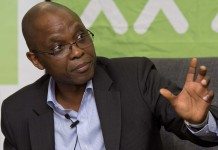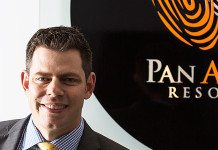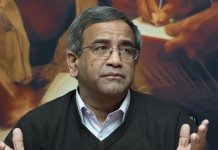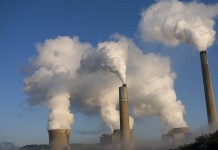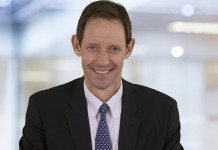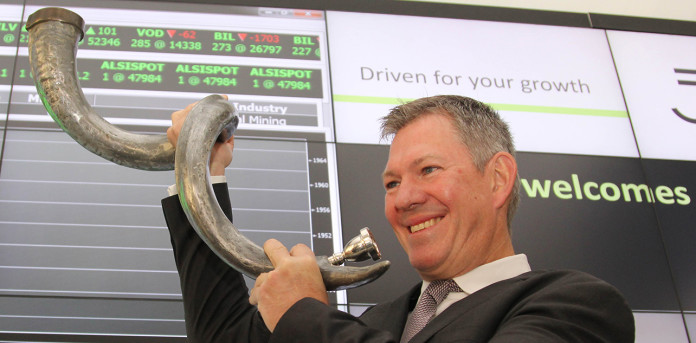
“SORRY, this is just our energy efficiency,” says Mike Fraser, COO of South32’s Southern Africa assets. He waves his arms and the office lights flicker into action again. One can’t remember this happening during a media interview at South32’s Johannesburg headquarters.
Located in Hollard Street, facing on to a square shared with the Chamber of Mines, South32’s old address said everything about its former parent company, BHP Billiton (now BHP) and before that, Billiton; and before that, Gencor. Complete with helipad, 6 Hollard Street was every inch the mining house establishment. There would be none of this namby-pamby saving of electricity in the salad days of the Seventies and Eighties when Gencor was in its pomp.
Today, South32 inhabits the somewhat swisher environment of Melrose Arch with its array of restaurants and trendy cobble paving, but then it shares its offices with Worley Parsons, the consulting engineering company. Awash with natural light, the new South32 speaks entirely of utility – what former Billiton CEO Brian Gilbertson once described as “functional yet comfortable” following his relocation of Gold Fields from its old Gold Fields of South Africa offices on Fox Street, Johannesburg, to Sandton.
It’s clear leadership at South32 has thrown its energy into becoming the thoroughly modern mining company. Group CEO, Graham Kerr, has denounced new, greenfield coal-mining projects because shareholders increasingly don’t prefer spending money on carbon-rich initiatives. And even when the company does decide to spend money on buying fresh sources of coal, it’s done so with a watchful glance at its balance sheet.
A $200m bid for Metropolitan Colliery and a 16.7% stake in the Port Kembla Coal Terminal in Australia’s New South Wales from Peabody Energy Corporation was passed up after the Australian Competition and Consumer Commission effectively scuttled the offer by introducing measures Kerr felt would “…adversely affect the value proposition”. Uttered like a true accountant, but more importantly, Kerr’s decision-making pretty much aligns with investor tastes.
Instead, Kerr and his team have focused on exploration, investing $81m in Arizona Mining, having a month earlier already taken a $30m option over Toronto-listed Trilogy Metals, which is hunting for copper in Alaska’s Ambler Mining District. For a company called South32 – a reference to the 32nd parallel that links its primary operating districts in Australia and South Africa – this is all a bit northern hemisphere in feel.
“If you look at the growth opportunities, a lot of the investment has been in Canada and now in the US in Hermosa [Arizona Mining’s Hermosa-Taylor project], but there are also projects in Peru and Chile and we’ve also got an adjacent tenement to Cerro Matoso, which is a potential copper-gold opportunity that we’re exploring,” said Fraser.
“Graham has spoken a lot about this thinking that the best value opportunities are going to be through the drill bit rather than by doing big commercial deals,” he says. “Where we can do bolt-ons, we’ll do that. We tried to do the Metropolitan deal; it didn’t work out, but it’s going to be really difficult to try and find deals at value.
“We’re really conscious about the investor sentiment of not just going out and buying stuff for the sake of buying things, but trying to do the right deals. And if you don’t find the right deals, give cash back to shareholders, which is why we also made a decision this year to do the buybacks, the $500m buyback,” he said.
Analysts are excited by the payout returns South32 is offering. Macquarie said in a report following South32’s third-quarter figures that will net cash of some $1.5bn, and with $100m of the $500m then having been deployed, there was the prospect of a dividend improvement. “The company ended 3QFY17 with a net cash balance of about $1.5bn, hence we believe a doubling of the buyback to $1bn or a special dividend is becoming an increasingly likely prospect,” the bank said following a roundtable meeting with Kerr.
The performance duly followed. On August 24 it reported a more than trebling in free cash flow to $1.9 bn and a net cash balance of $1.6bn at June 30. The dividend increased to 10 cents a share from 1.0c a share previously.
“I think the most distinctive thing that everyone talks about is the fact that we have a very robust balance sheet,” said Fraser. “Even with paying the 40% of underlying earnings as dividends as a minimum, there’s still a lot of cash generation beyond that.”
FRASER’S remit is something of a political hot potato given that the group’s aluminium smelter assets in KwaZulu-Natal province and coal mines in Mpumalanga see the company selling coal to Eskom from which it buys significant amounts of electricity.
As anyone tracking the South African economy knows, the power utility is the dipstick to the country’s back-firing engine. Corruption charges over the last four to five years have led to massive turnover in its executive skills, most publicly, former CEO Brian Molefe who stands accused of a corrupt relationship with the politically influential Gupta family. Is it getting yet more difficult to do business with the utility given the logjams created by this intrigue?
“Logjam?”, Frasers responds when asked of recent developments at Eskom. “I think it’s been like that for a while,” he said. “No doubt it’s become harder for Eskom to award new coal supply agreements [CSAs] than it is to amend existing agreements and continue to invest. So our go-forward hypothesis is that we’ll use our current CSAs and this will be an addendum,” he commented.
I think the most distinctive thing that everyone talks about is the fact that we have a very robust balance sheet
South32 operates three main coal mines – Klipspruit, which is essentially an export mine; Khutala, which supplies Eskom’s Kendal power station; and another Eskom and export mine, the Wolwefontein-Middleburg Complex or WMC, as it’s called. South32 is currently deliberating on two replacement programmes of which the $250m Klipspruit project is the most pressing: a decision on raising the green flag has been put out to the first half of the current financial year.
As for Khutala, a feasibility study is currently underway – being financed by Eskom – with the aim of making an investment decision at the year-end.
“Khutala is almost a ‘no-brainer’,” said Fraser. “It’s a really good coal supply source and Kendal is required by Eskom for a long time and so from an economics point of view, it makes sense to continue to invest.”
During his tenure as CEO, Molefe caused a stir by insisting Eskom would not invest in new cost plus mines – operations where Eskom paid for the capital development in return for exclusive supply at guaranteed coal qualities. In Molefe’s view, Eskom wanted to own the bread, not the bakery.
“And I think that even under Brian Molefe, Eskom recognised that putting in your own capital, however costly, is still cheaper than inducing other capital because then people have to create risk on top of it. So that’s why I think in some respects recapitalising the cost-plus operations still makes sense,” said Fraser.
THE redrafted Mining Charter, known as MC3 in some quarters, is a cause for concern for nearly every mining company, but Fraser believes it could have a negative knock-on effect for government-owned companies that have a relationship with the private sector, especially Transnet.
The transport and logistics company derives more than half of its revenue from Transnet Freight Rail (TFR), which is the freight service the majority of the principal bulk mining companies use in order to move exports from mine to port. Fraser said the Mining Charter could discourage investment in replacement resources, which would hinder the ability of miners to meet take-or-payment agreements with Transnet in the future.
Commenting on whether South32 will finally give the blessing to the Klipspruit coal mine expansion in the context of an unworkable Mining Charter, Fraser says: “We also have a take-or-pay contract with Transnet so that presents a challenge in terms of what is our position if this [Klipspruit] doesn’t go ahead?
“Where does Transnet sit if people stop investing because of constraints placed on them under the Mining Charter?” he says. “Does that mean Transnet is going to get a number of claims or a drop in export volumes?”
Might this result in mining companies asking to be released from the take-or-pay agreements on the basis of force majeure that the Mining Charter represents an unforeseen and unavoidable event that makes honouring the contract impossible?
Said Fraser: “Force majeure? Potentially. Who knows?
“It’s early for me to speculate on that, but I can tell you that that is what companies will start thinking about. For those that are fully capitalised, that have access to flexible volumes, maybe it’s not as big an issue. But for companies that are making decisions to continue to invest, those are going to be materially different.”
We’ve got some big investment decisions that we’re obviously committed to, but having some certainty around the Mining Charter makes it a lot easier
While the Klipspruit investment is likely to be approved, there are other growth projects in South32’s extensive coal resources held in South Africa where building a mine isn’t a slam dunk. One is Leandra, a development project on the border of the Gauteng and Mpumalanga provinces near Ermelo. “This is a standalone project that we’d always had in our batting order. We’ve got Pegasus; that’s another project. So these are all projects that we considered as ongoing development projects in that coal portfolio,” he said.
“We’ve got some big investment decisions that we’re obviously committed to, and continue to take in coal, but having some certainty around the Mining Charter makes it a lot easier to make those investment decisions,” says Fraser.






